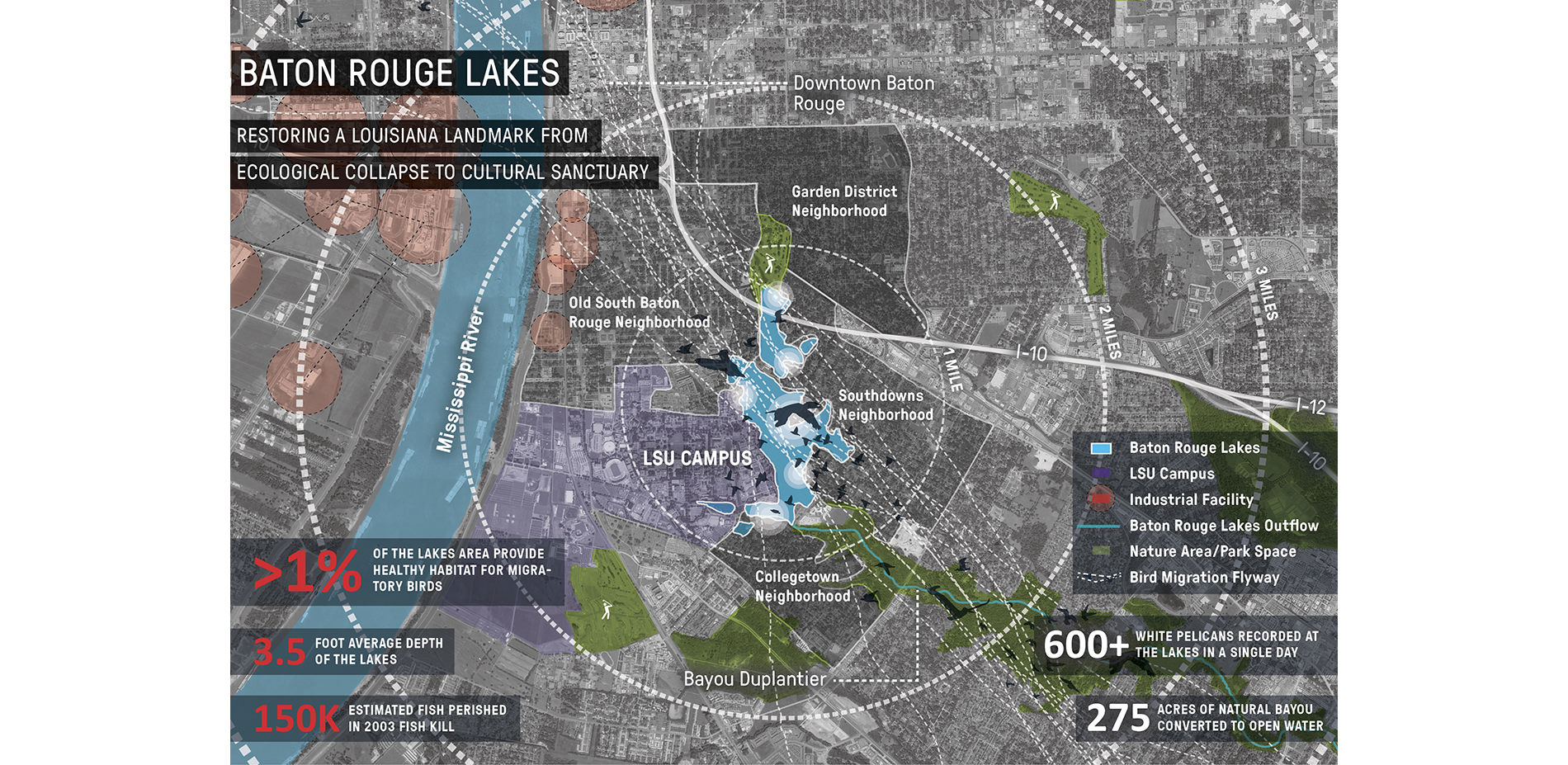
Located in the heart of Baton Rouge, the lake system is in a position to provide a habitat oasis for both ecological and cultural interests. However, existing shallow lake depths, and the lack of diverse ecological systems contribute to the overall decline of the lakes.
Photo Credit: John Singleton
Media: Please submit high-resolution image requests to images@asla.org.
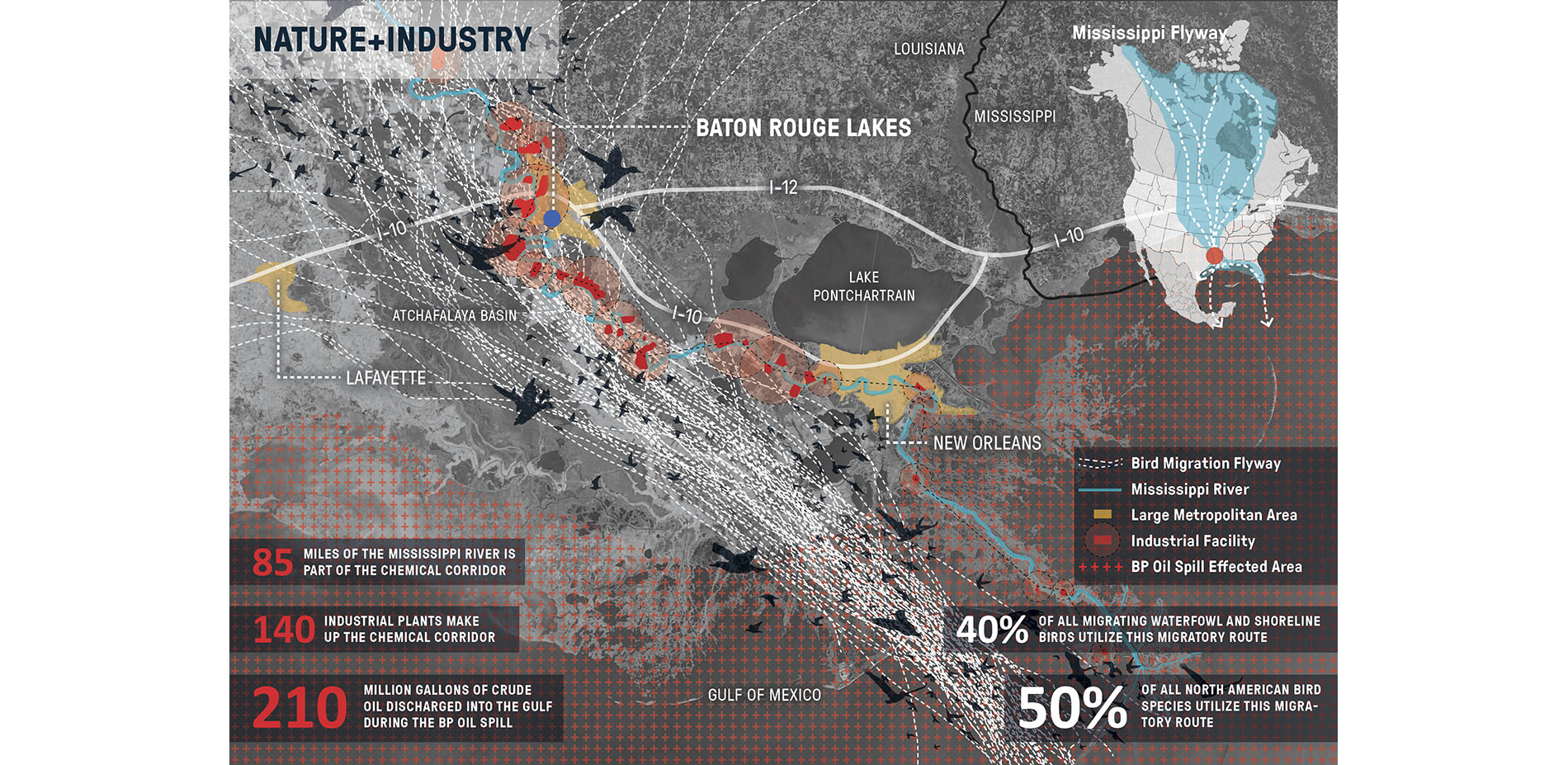
The juxtaposition of Louisiana’s immense industrial networks and ecological riches create distorted perceptions of what it means to be from Baton Rouge. The Master Plan’s emphasis on best management practices establishes a cultural benchmark that will redefine the City.
Photo Credit: John Singleton
Media: Please submit high-resolution image requests to images@asla.org.
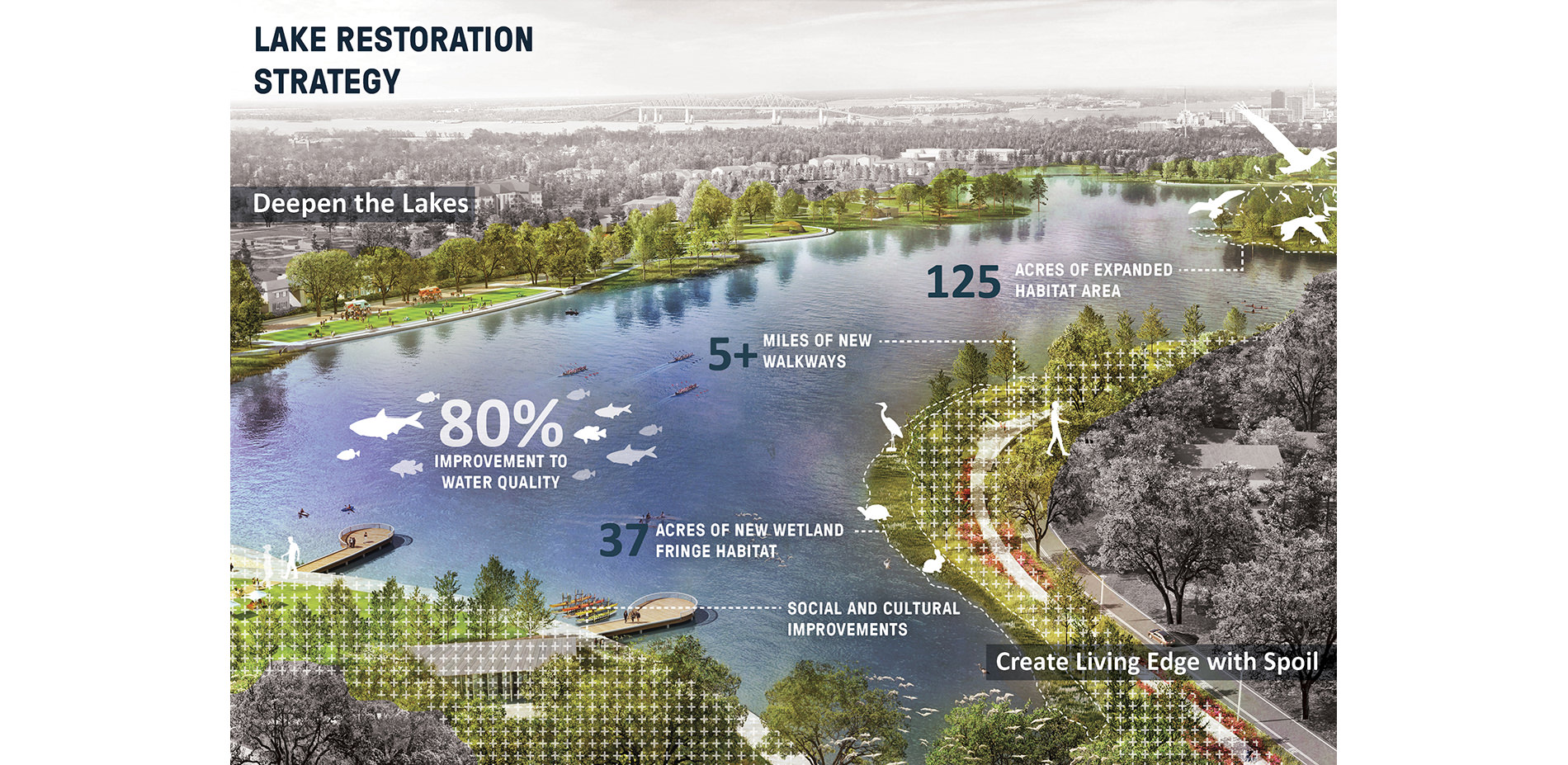
A sensitive approach to earthwork results in robust and diverse ecological and cultural systems. The necessity of deepening the lakes provides opportunities to create living edges that improve water quality, add habitat, and expand park space and trails.
Photo Credit: John Singleton
Media: Please submit high-resolution image requests to images@asla.org.
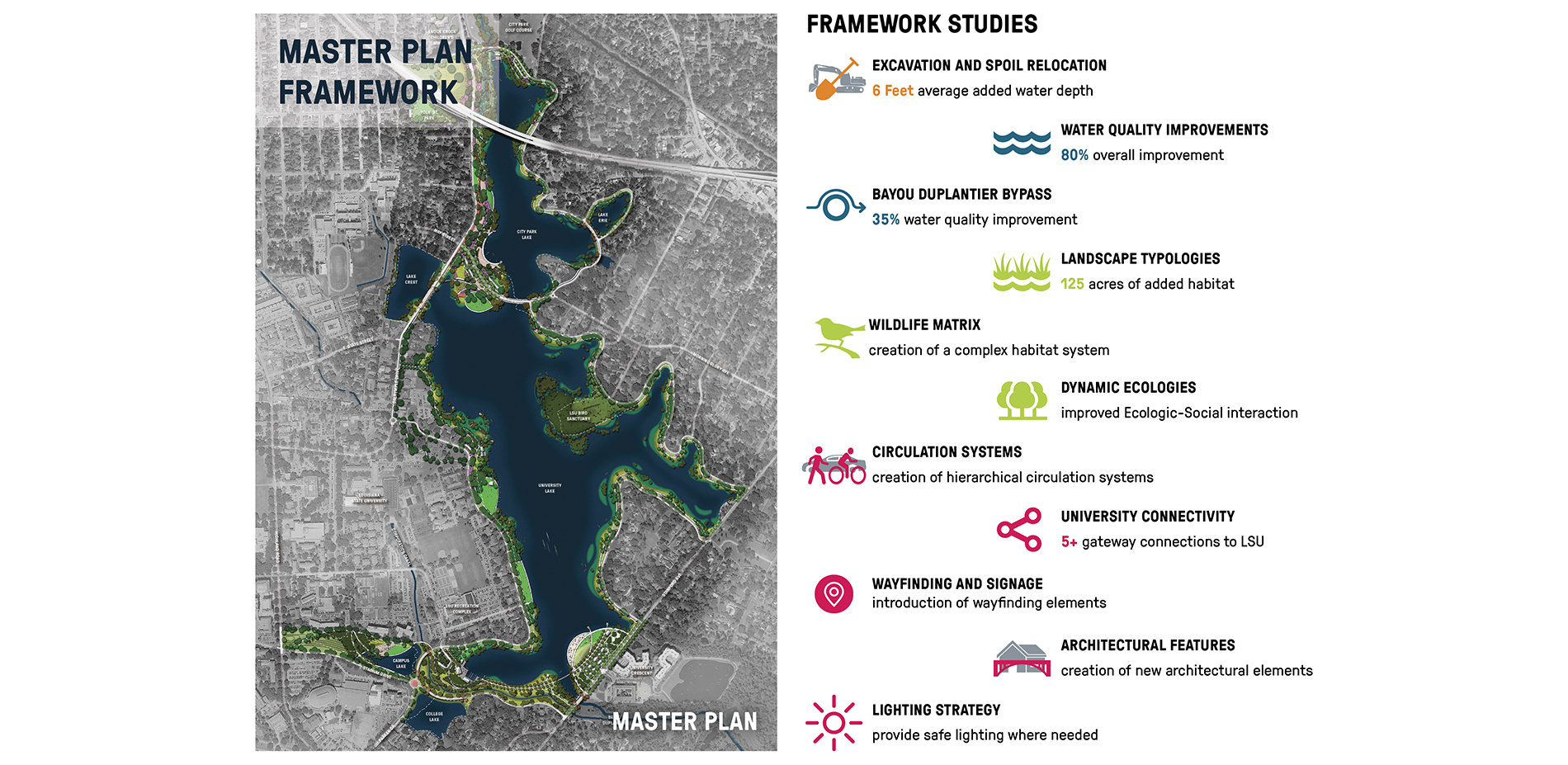
The Master Plan is a multi-faceted project that leverages the primary need to improve water quality, to create a dynamic composition of nature, culture, and education. Thoughtful design leads to water infrastructure that also provides expanded habitat and recreational amenities.
Photo Credit: John Singleton
Media: Please submit high-resolution image requests to images@asla.org.
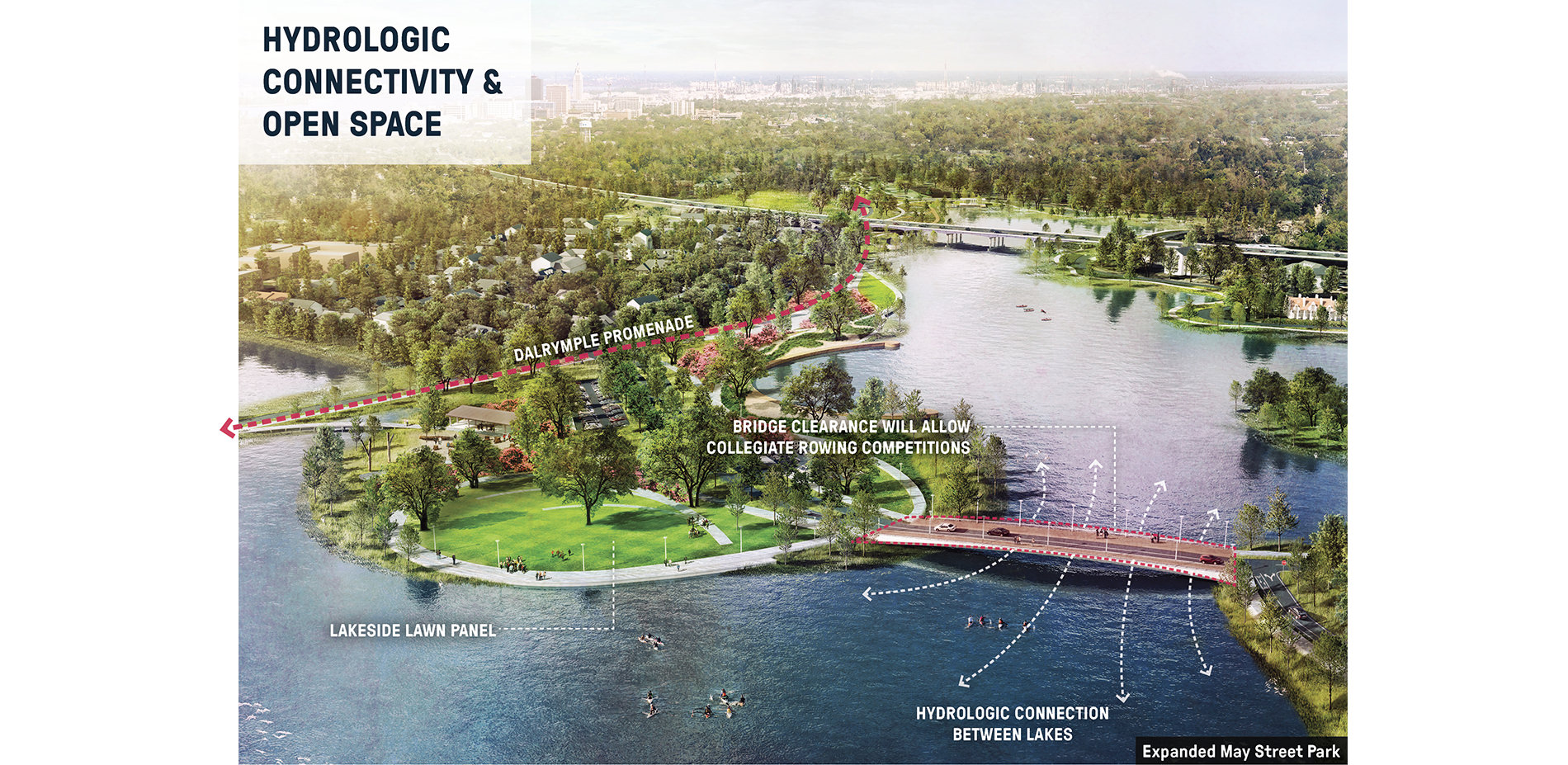
Currently the project’s two largest lakes are separated by a small water control structure. A new signature 200’ long bridge will hydrologically connect these lakes and provide an opportunity for year round collegiate rowing activities and other public uses.
Photo Credit: John Singleton
Media: Please submit high-resolution image requests to images@asla.org.
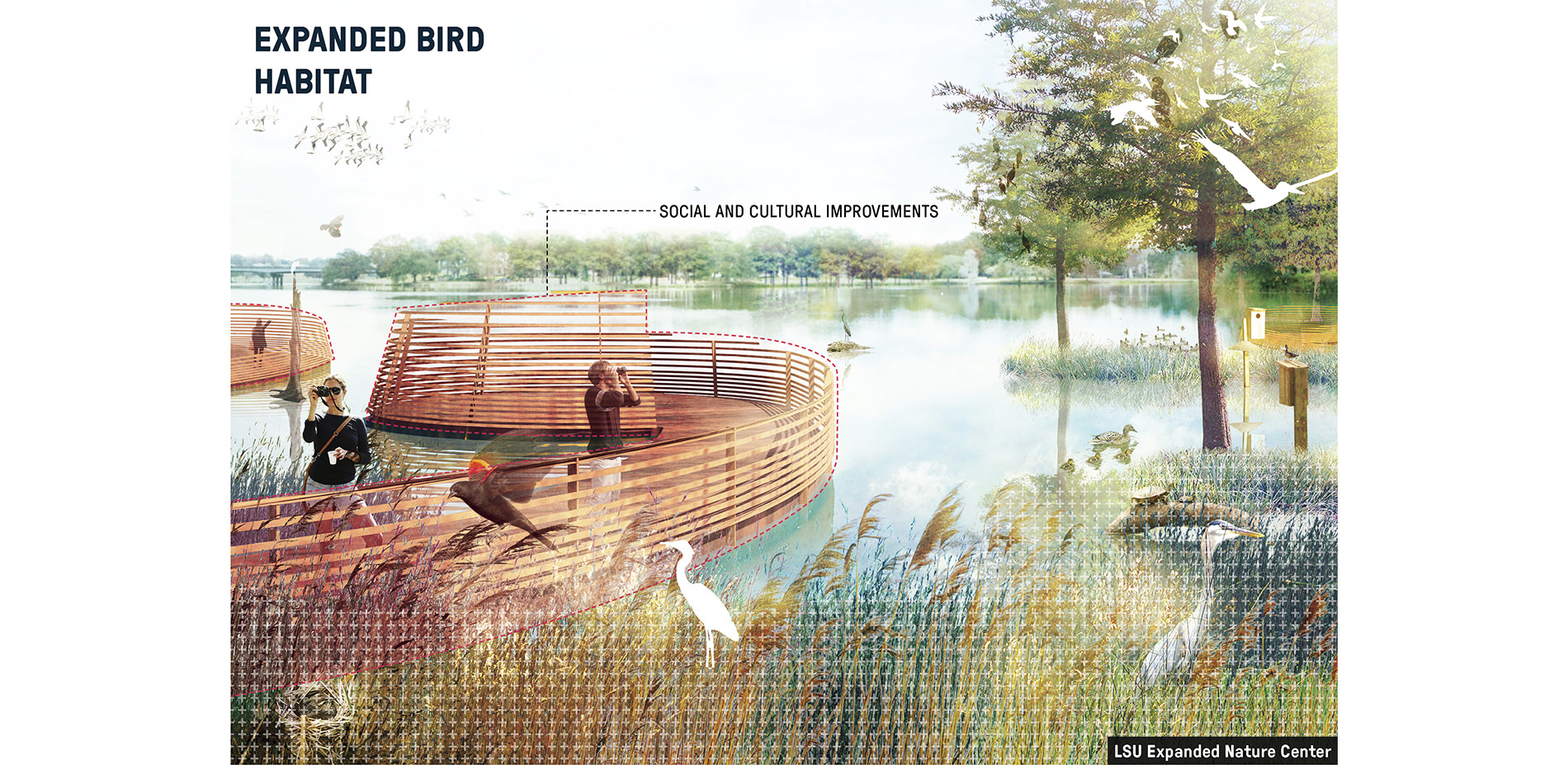
A wetland park is situated on the west side of University Lake to expand essential aquatic habitat and function. The park will include a nature center with educational opportunities for local citizens, visitors to the area, and university researchers.
Photo Credit: John Singleton
Media: Please submit high-resolution image requests to images@asla.org.
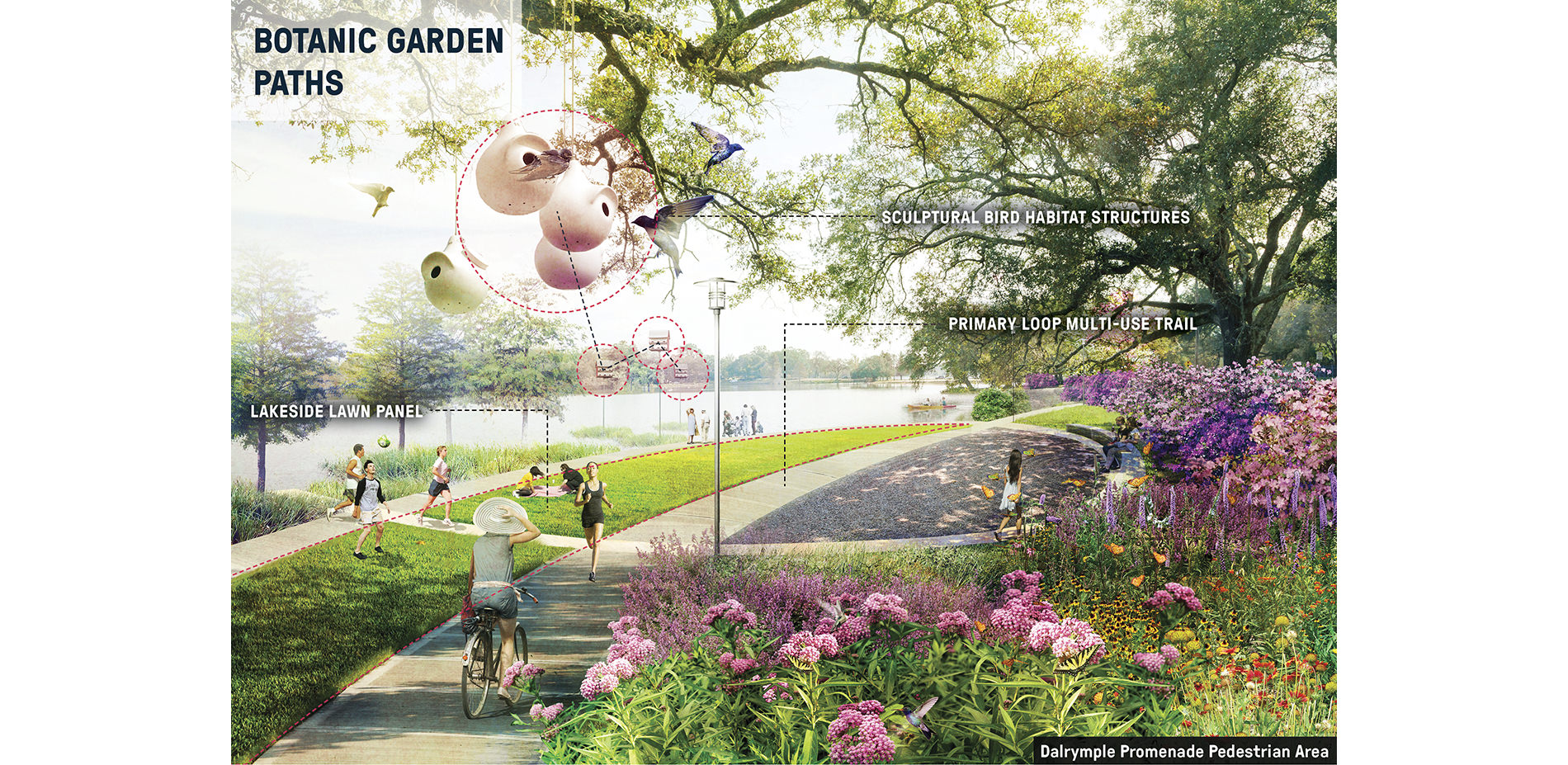
Striking botanical displays are strategically placed for maximum impact. Honoring the southern garden tradition, these zones serve as strategic project gateways to the Lakes and University while also offering respite for lakeside trail users.
Photo Credit: John Singleton
Media: Please submit high-resolution image requests to images@asla.org.
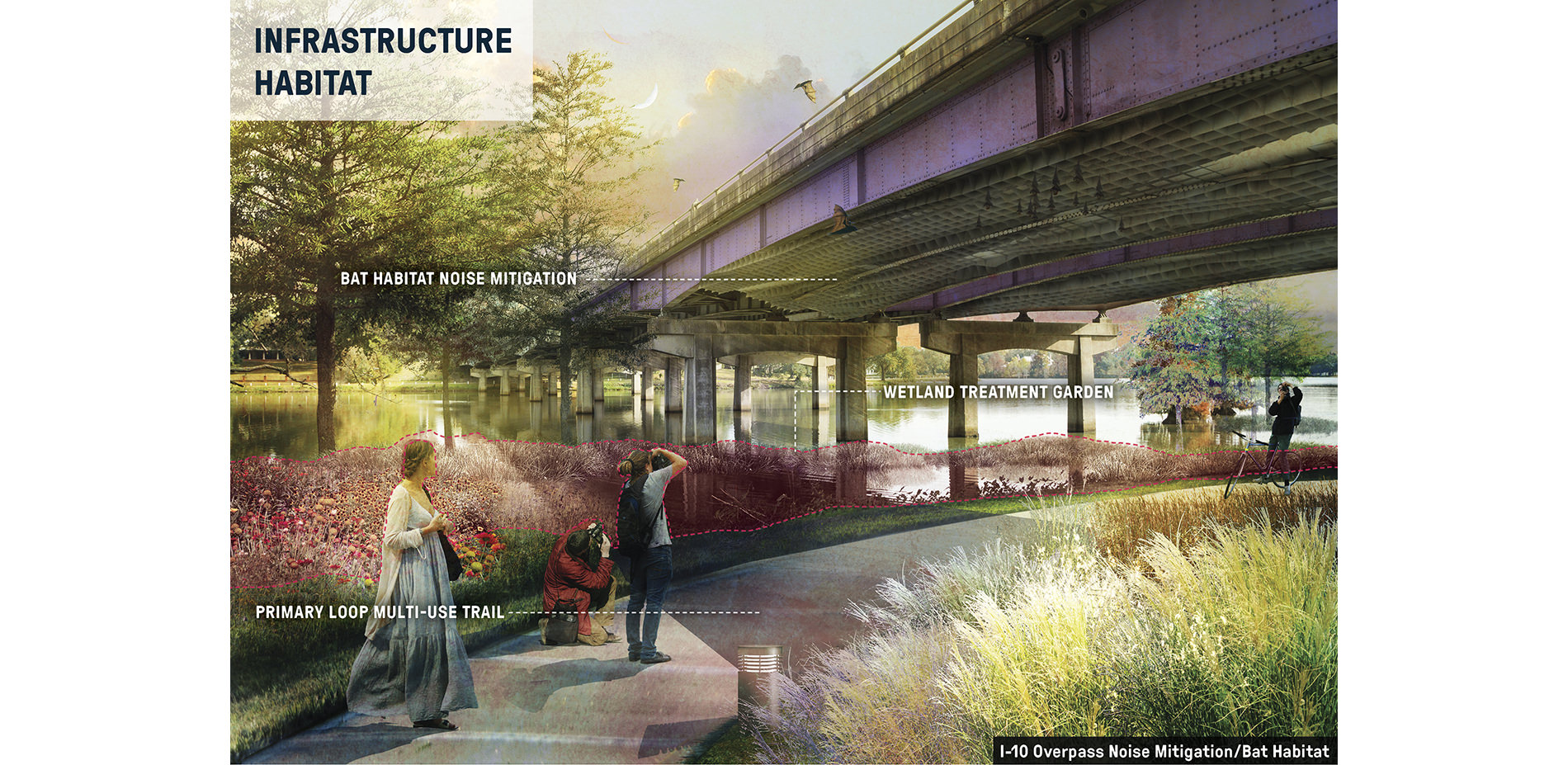
The project’s northern lake is bisected by an unsightly and relatively loud section of Interstate 10. Working with maintenance and access needs, a baffle system is designed to mitigate noise and also serve as bat habitat.
Photo Credit: John Singleton
Media: Please submit high-resolution image requests to images@asla.org.
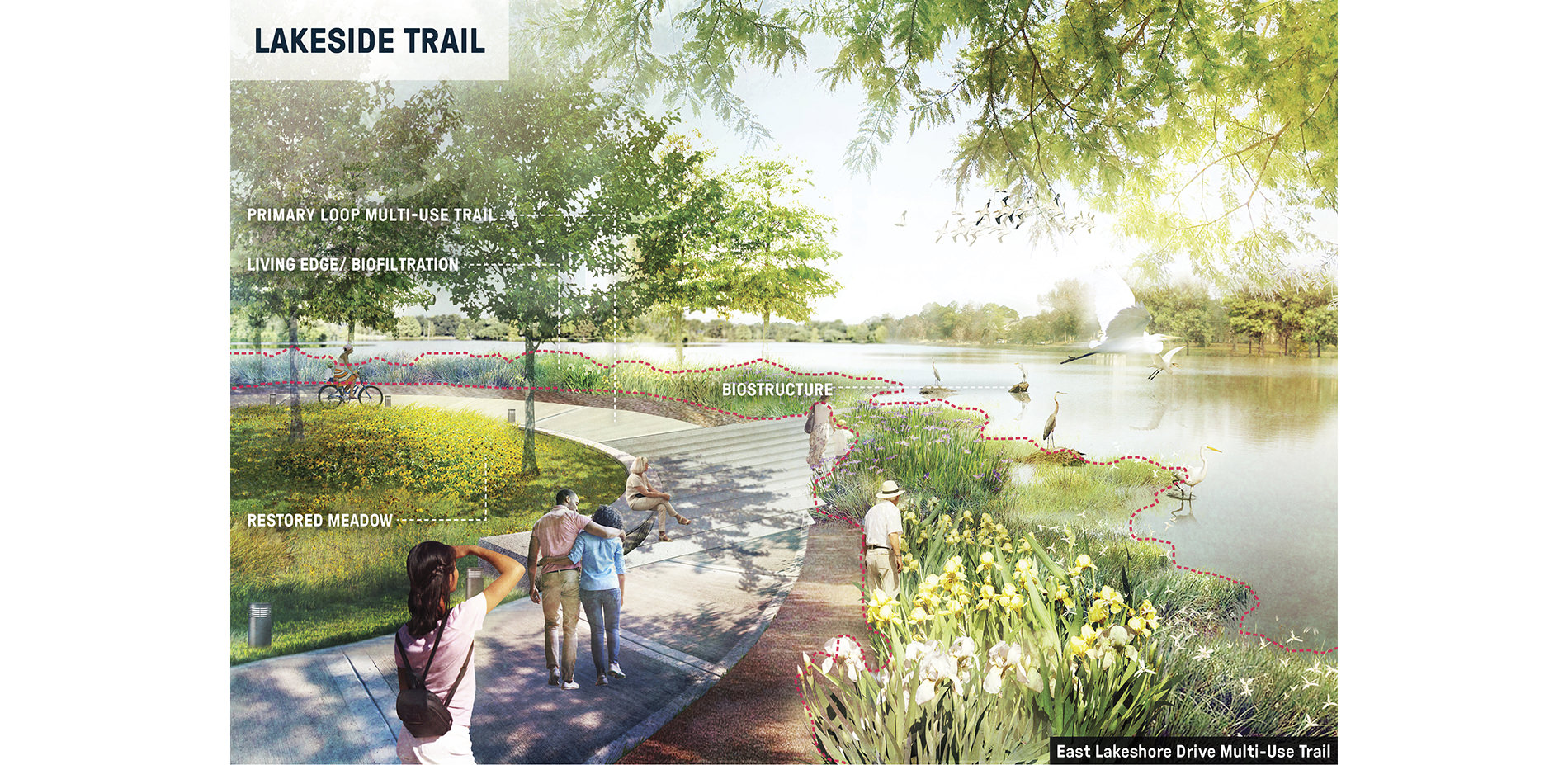
Significant pedestrian and vehicular conflicts occur along all edges of the lakes. A lakeside trail located on new shoreline fill will create a hierarchy of circulation to reduce conflicts, engage users with the lakes, and expand nature based recreation.
Photo Credit: John Singleton
Media: Please submit high-resolution image requests to images@asla.org.
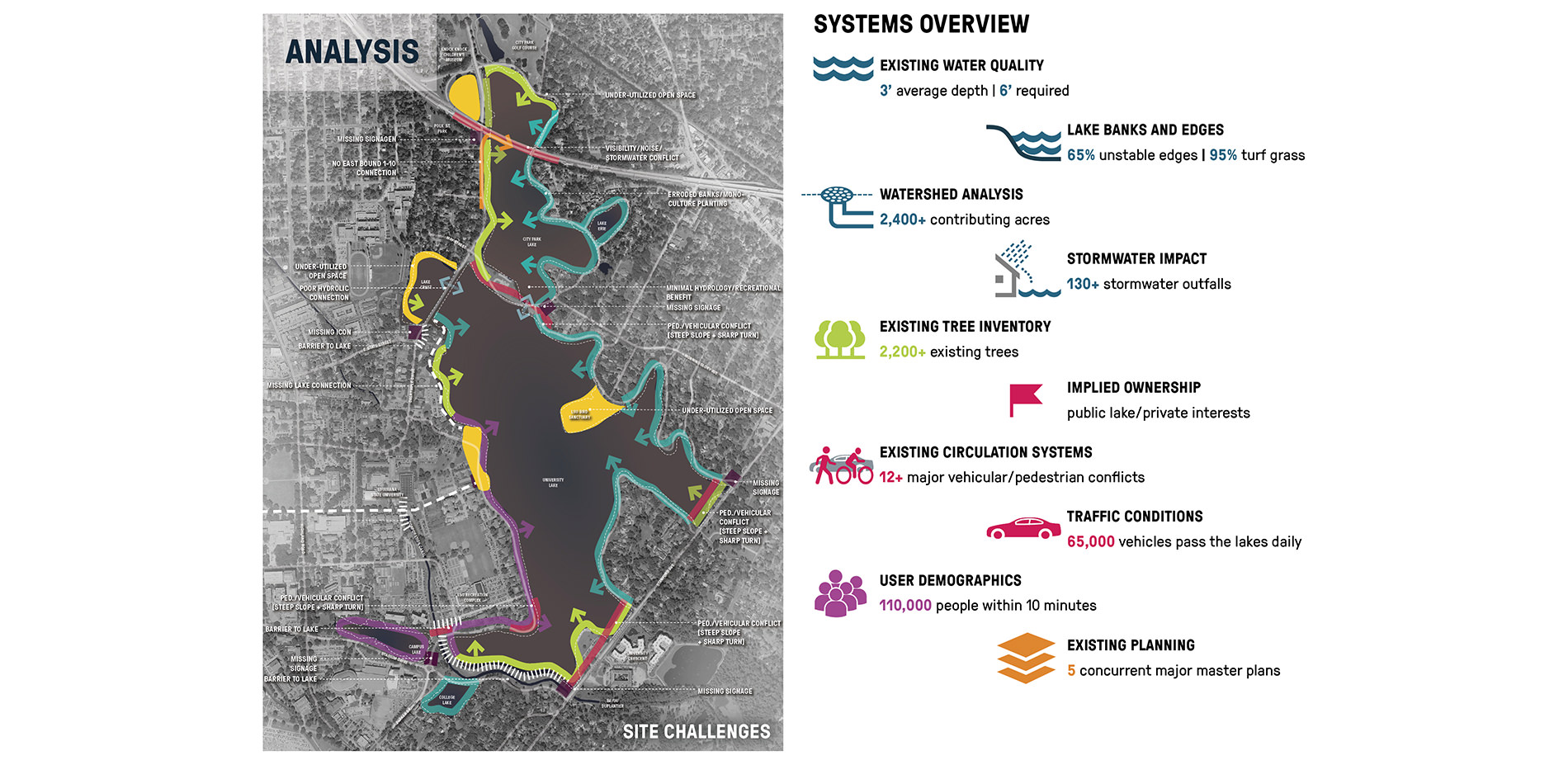
A thorough understanding of the site was achieved though analysis of various site systems, historic research, and multiple meetings with an advisory committee and stakeholders. In addition to obvious water quality issues, implied ownership of adjacent land uses proved to be particularly challenging.
Photo Credit: John Singleton
Media: Please submit high-resolution image requests to images@asla.org.
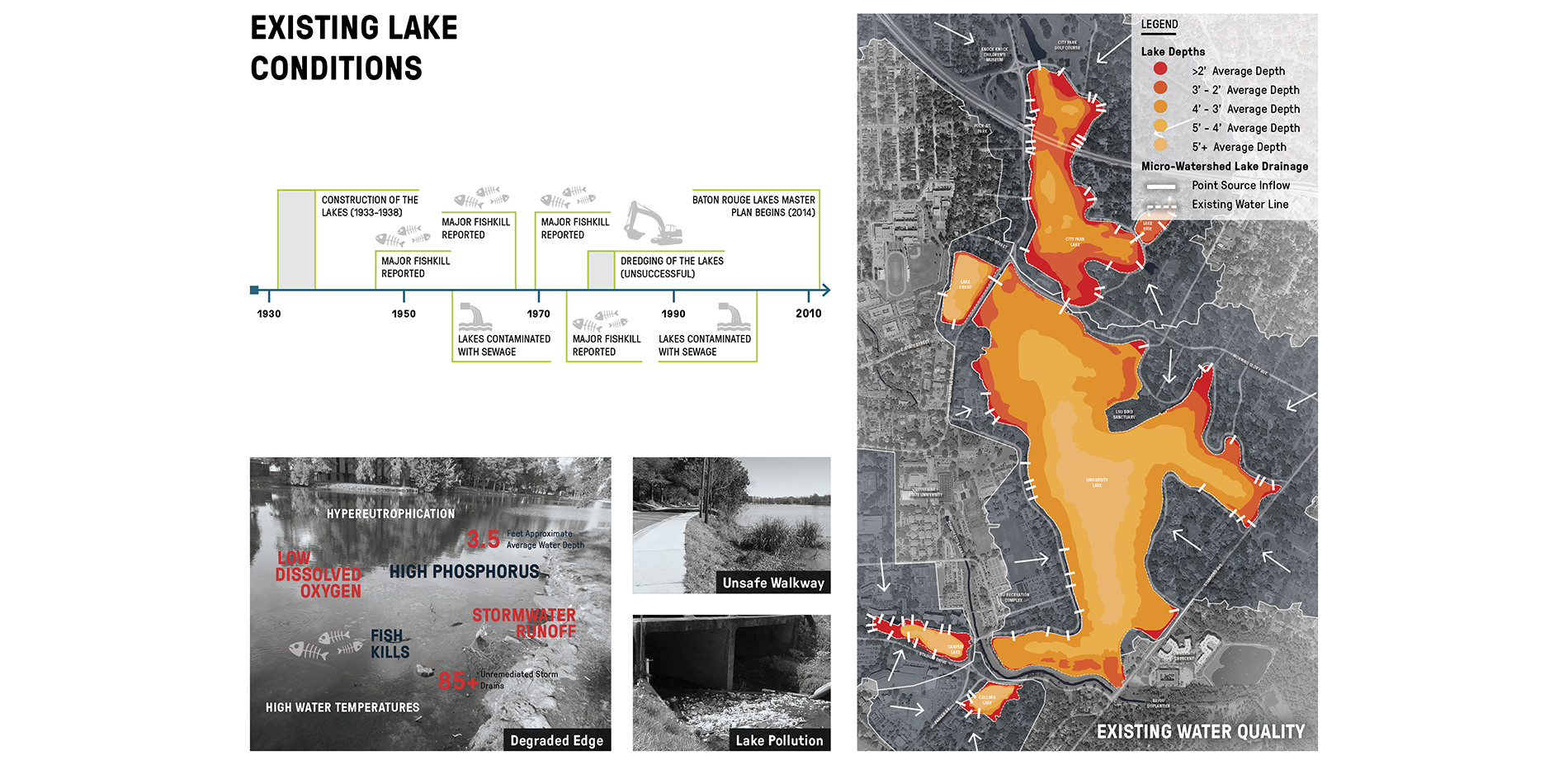
From their inception, the Lakes have suffered from flawed ecological underpinnings. Their conversion from Cypress Swamp to amenity lake resulted in remnant underwater obstacles, leaking infrastructure, the introduction of point source pollutants, and insufficient depth leading to exponential ecological decay.
Photo Credit: John Singleton
Media: Please submit high-resolution image requests to images@asla.org.
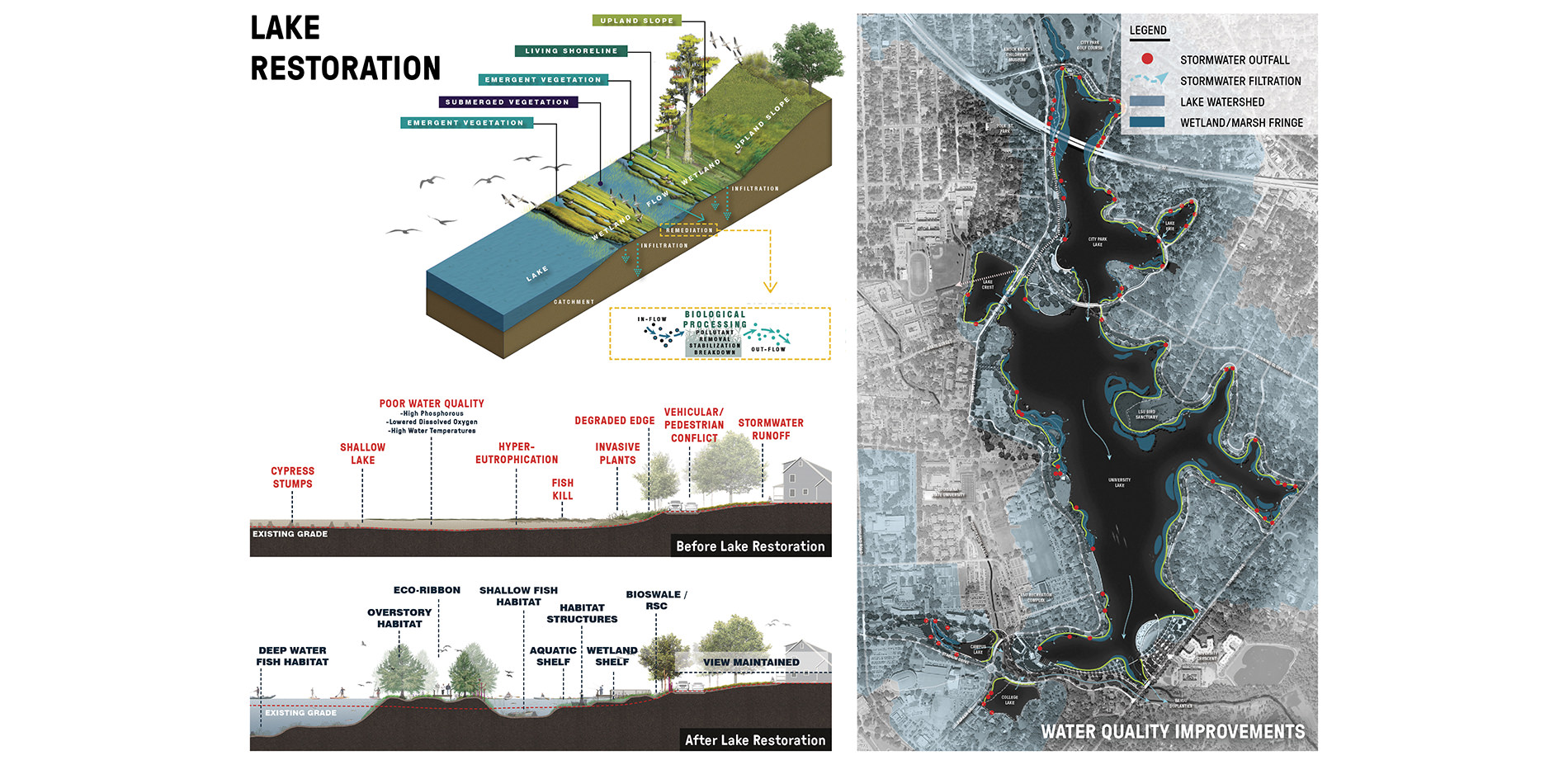
Excavation costs necessitate a plan that balances cut and fill on-site. Lake deepening is offset by the expansion of failing slopes, relocation of shallow areas to water polishing zones, and the creation of public park space along the University.
Photo Credit: John Singleton
Media: Please submit high-resolution image requests to images@asla.org.
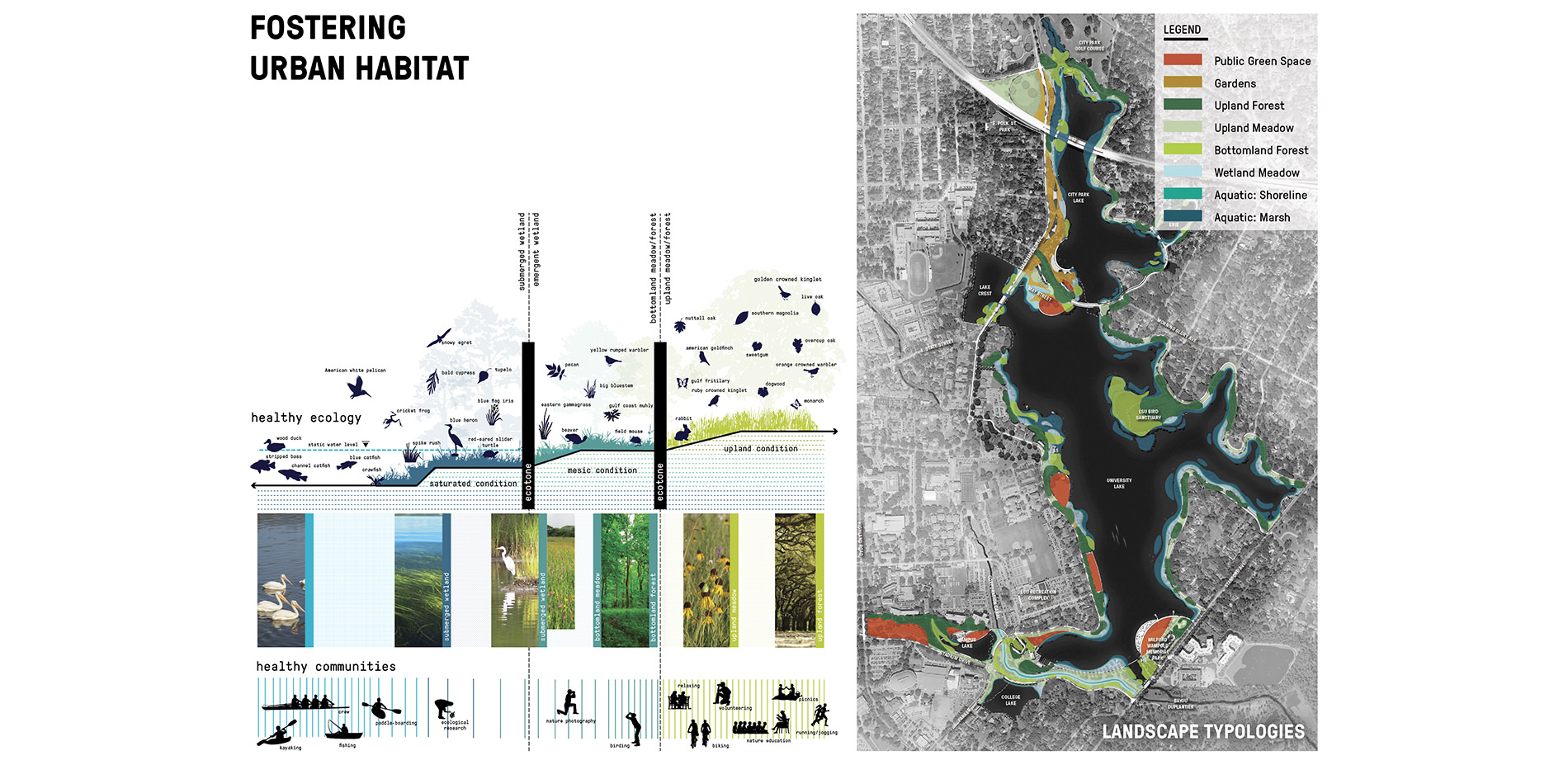
The inclusion of a series of landscape typologies based on hydric zones and local ecosystems creates a diverse matrix of flora and fauna. Biologic function is prioritized with a majority of the site being naturalized and minimal manicured areas.
Photo Credit: John Singleton
Media: Please submit high-resolution image requests to images@asla.org.
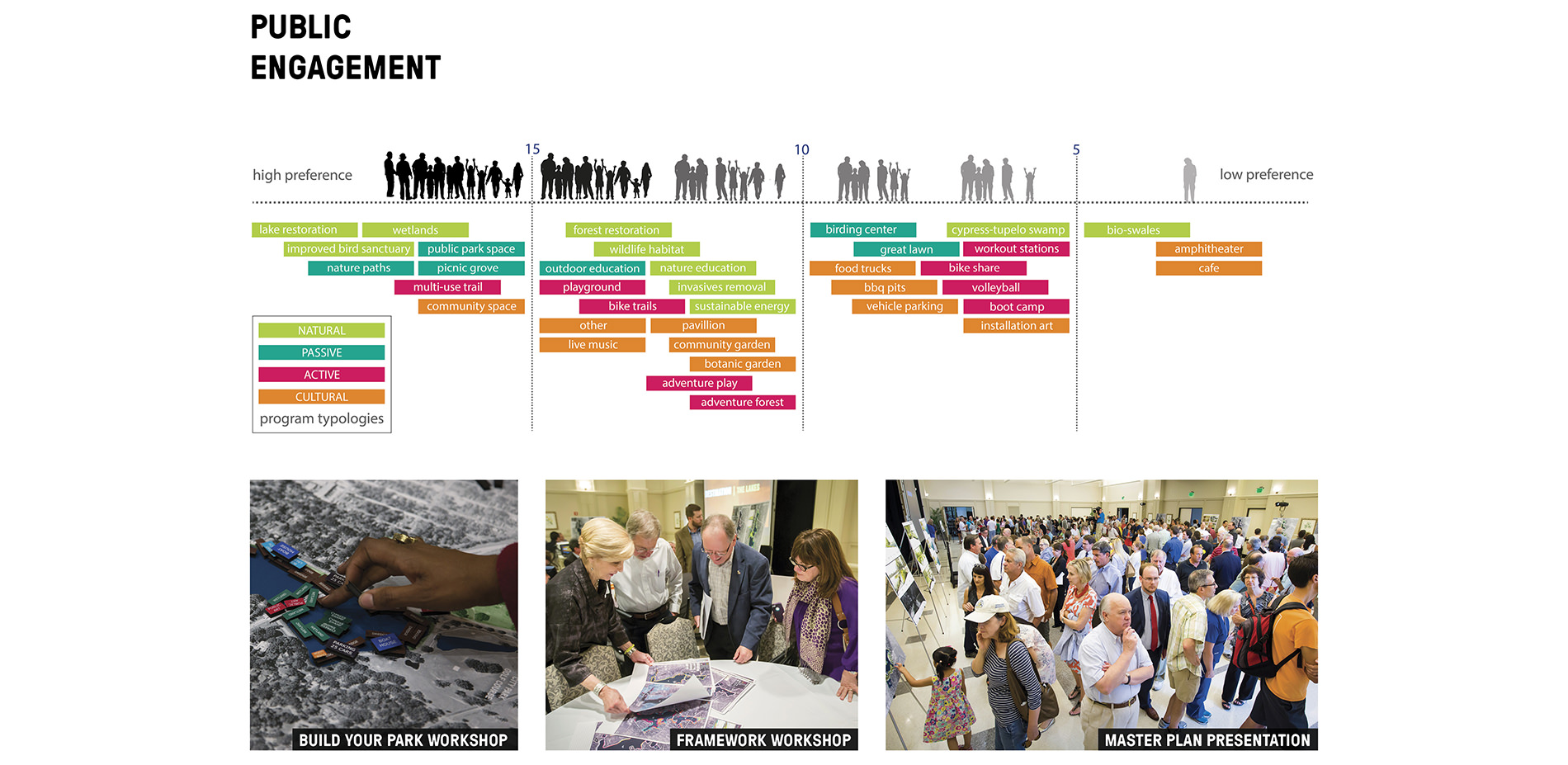
Given the lakes status as a city icon, five public workshops were successfully conducted to uniquely engage current and future users. Each was designed to allow hands-on interaction with the community and each session significantly exceeded projected attendance.
Photo Credit: John Singleton
Media: Please submit high-resolution image requests to images@asla.org.

















